PHASE 3: Develop
Challenges
We created an an actionable problem statement to converge a deeper understanding of our specific users, their needs and our most essential insights about them. This new challenges served us to inspire the ideation session and look for new perspectives.
● How could we guarantee comfort in the fitting room trough and immersive and sensory experience?
● How could we reduce waiting times through the creation of a system that organizes and manages the service?
● How could we reduce online returns via taking advantage of physical store resources?
We ran an ideation session and proceeded to vote our ideas following our idea evaluation criteria, which was not only to meet the user needs but ensure Inditex business growth. Then we designed a collaborative co-creation session with target users to give a voice to the stakeholders involved in the final solution. This helped us simplify our design and add some variations to it to adopt a more user-centered approach.
PHASE 1: Discover
Hypothesis
Starting with the discovery phase, we considered 6 different hypotheses, focusing on the two most relevant ones.
● Despite the recent relevance of the e-commerce market, users will never stop buying in physical stores.
● The decision of purchasing is made in the changing room.
Secondary research
We carried an initial research on relevant data and patterns in the retail industry as well as a benchmarking of competitors and other innovative solutions. We landed on an analysis of the current Inditex proposals as a starting point for the project. Our goal was to understand the retail and services market from a human centered point of view.
Primary research
We conducted 6 ethnographic interviews in stores to learn about user habits in this specific context as well as two online surveys to systematically study the needs, struggles and triggers of users and map the user flow of decisions when shopping online and offline.
We interviewed two Inditex buyers to understand in-house processes and help us converge our point of view.
Role: Service Designer | Team of 4
Skills coverage: UX Research, Service Design, Interaction Design
Duration: 4 months
Challenge
Unify the advantages of a physical store and an online store into a cohesive and user centered service.
My role
This project is part of my master's degree thesis, in which I worked closely alongside three designers with very similar profiles and diverse backgrounds, all with a will to apply a user-centered approach in our work. This allowed us to provide support in every phase of this project, delegating when necessary to streamline the project phases.
PHASE 1. Relevant discoveries
Physical stores
● Users are reluctant to do without fitting rooms in physical stores.
● The overcrowding and waiting times in the changing rooms reduce the desire to go shopping to the store.
● Users prefer to buy in shopping centers where more options are offered and stores are closer to one another.
Online stores
● Online shopping is considered more convenient.
● Most users dispense with online shopping due to the need to try on the clothes to evaluate them before purchasing.
● Every store is available online.
● 30% of the purchased items are returned in online shopping.
What users are saying
“At home I can spend hours trying the clothes on. I like to go out with the tags still on to see if I feel comfortable in it.”
“I have not returned it yet because I am don't feel like going back to the store. I'll end up giving it away probably.”
PHASE 2: Define
Some relevant insights
● The evaluation of garments in the fitting room is affected by poor space design practices.
● The return of garments implies an unforeseen effort that generates rejection in the user. This is reflected in the perception that buying online suggests a risk of loss.
User targets and user personas
We identified two main segments who would benefit from solving the pains discovered during research:
● Users who buy online to avoid the overcrowding of the store and to then return the clothes they are not satisfied with.
● Users who do not buy online because they want to try on the garments before buying them.
We also identified distinct shopping pattens and tendencies, which led us to differentiate users between necessity and leisure, tendency to buy digitally or physically and purchase frequency. As a result we identified these three main user personas:
● Impulsive fashionista
● Casual Shopper
● Responsable millenial
Success criteria
Our proposal meets the two established design principles, according to which the service must benefit the interests of both the stakeholders involved and the business and solve the user's pains. Therefore, the service has a value proposition for both the business and the user.
From a business point of view, FitTEX is a profitable and modular service to locate according to consumption demographic data, which takes advantage of the transport network, the ease of inventory, the introduction of premises with fixed income and few staff. It also alleviates pains such as the elimination or partial reduction of online returns and the consequent return shipment, and to online order logistics, both for the transport network and for store employees. On the other hand, it generates direct user gains, such as a greater influx of online purchases, greater user segmentation and personalization of the shopping experience, and the reduction of waiting times.


User flow in physical stores.
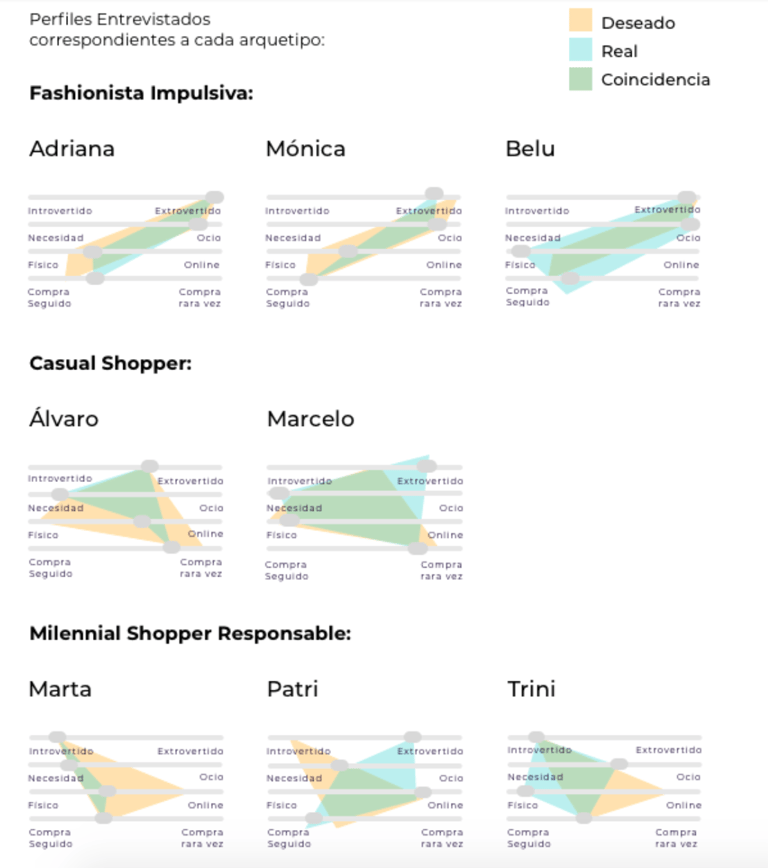


Level of correspondence of each interviewee with our user personas.

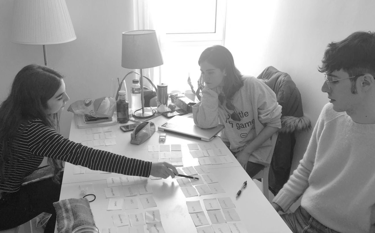
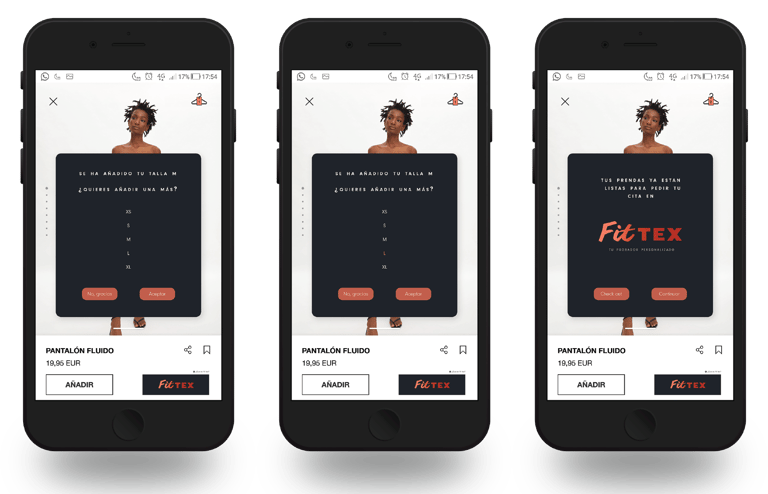

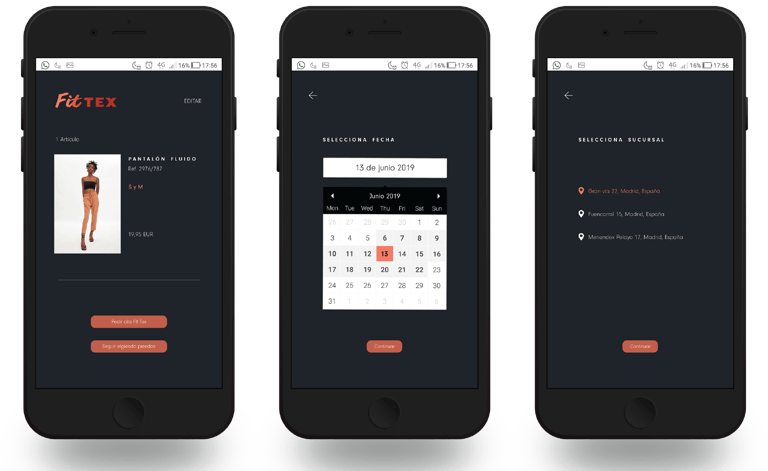

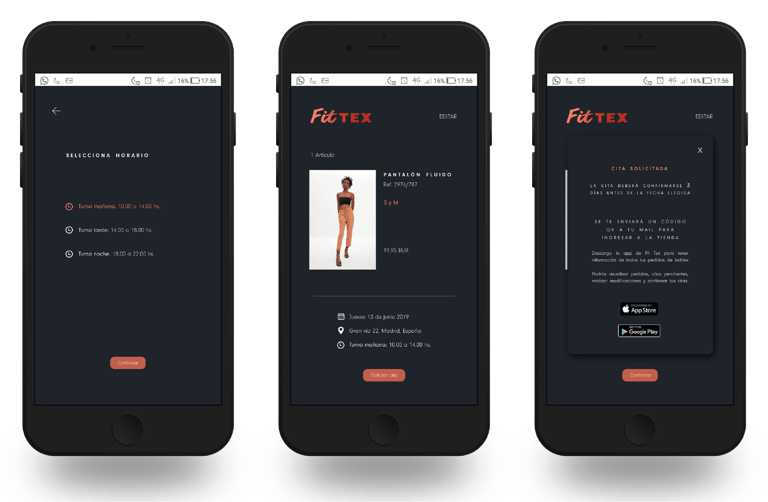

Future steps
● Seek financing to pilot the concept idea in a UX Lab to present the service to internal figures in the service area of Inditex.
● Carry out a prospective analysis to study and reflect on the future of the service with the help of a structural analysis matrix that relates all the elements that make up said service.
● Add new functionalities to the service (set the changing room temperature, customizable music, present collections in a more visual way, the presence of digital artifacts to buy online from the store).
● Draw up an implementation plan for the service in the city of Madrid using Inditex's internal data on consumption.
PHASE 4: Validate
We tested our service concept twice with target users to validate our design. The first round we prepared a test concept using the Wizard of Oz methodology with a low fidelity prototype. We iterated our design taking into consideration the feedback received and we prepared a high fidelity prototype to test our IA proposal and our UX copies, asking our users to complete simple tasks using the app to measure adding to cart and booking a fitting room related tasks.
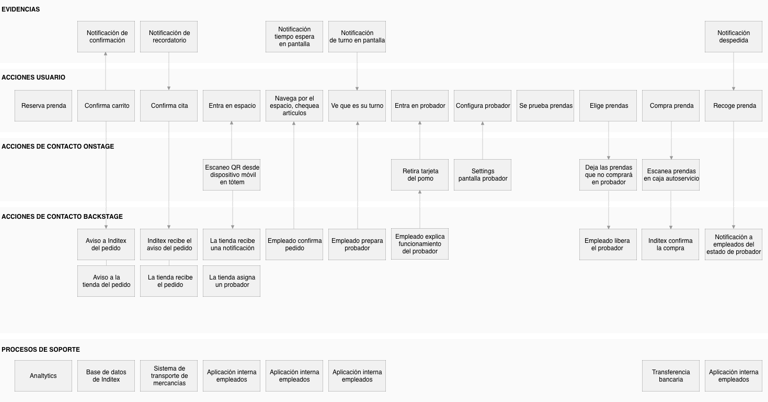

Service blueprint
Business achievements
● Resolves the inability to try items on
● Solves the lack of personal perception
● Meets the user's own evaluation criteria of items
● Decreases the number of online returns
● Increases the level of users' satisfaction with the online shopping service
● Online sales turnover increase
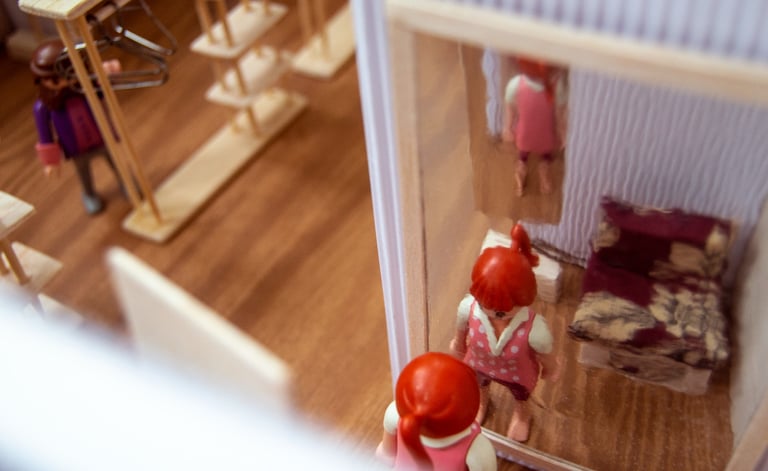


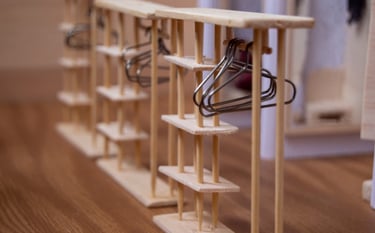
The ideation process.
High fidelity prototype of FitTEX for the test concept.

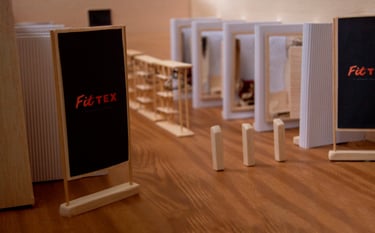
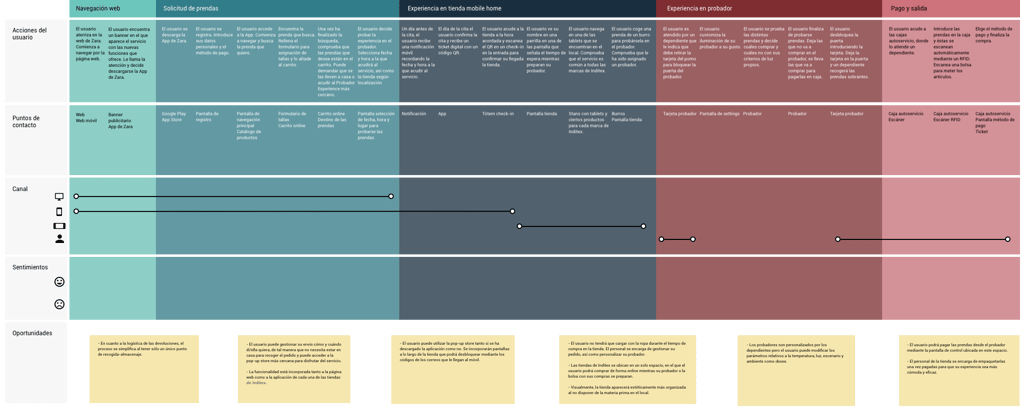

Customer journey through the service
PHASE 5: Deliver
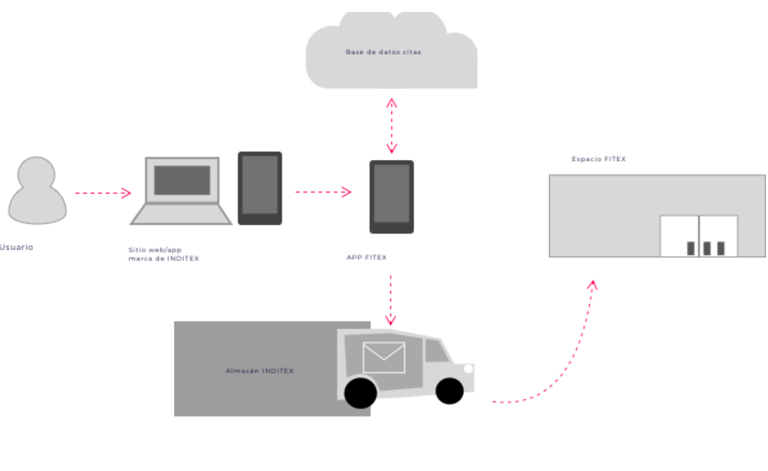

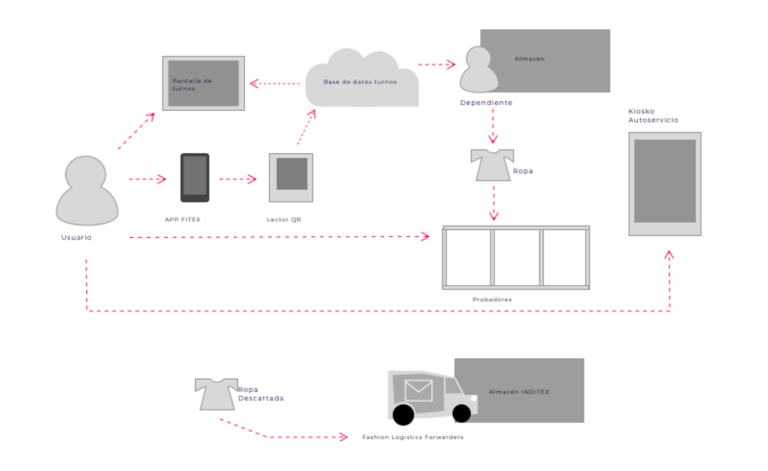

User-service interaction model of the digital service.
User-service interaction model of the physical space.
Back end service support
This is FitTEX
FitTEX is a hybrid service between the digital and physical experience offered by the Inditex group.
FitTEX provides the user with a new way of acquiring items purchased online from all eight Inditex brands.
After browsing and adding items to the cart, the user can reserve a customizable fitting room with the items in their cart to try them on on a date and location of the user's choice.
The FitTEX spaces, set up in different strategic locations, place special emphasis on facilitating the user to enjoy a unique, sensory and personalized shopping experience, which combines the advantages of online shopping with the inherent qualities to physical purchase, such as the ability to try on items before purchasing.
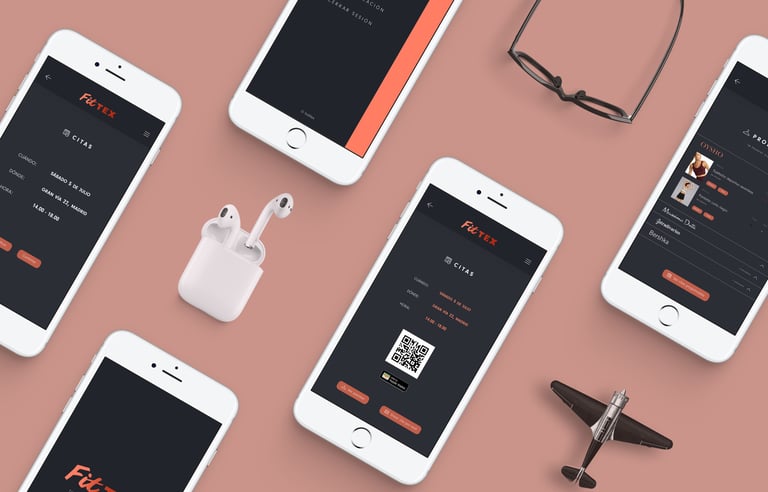

FitTEX
Optimizing the online shopping experience through a personalized fitting rooms service
Have a project in mind?